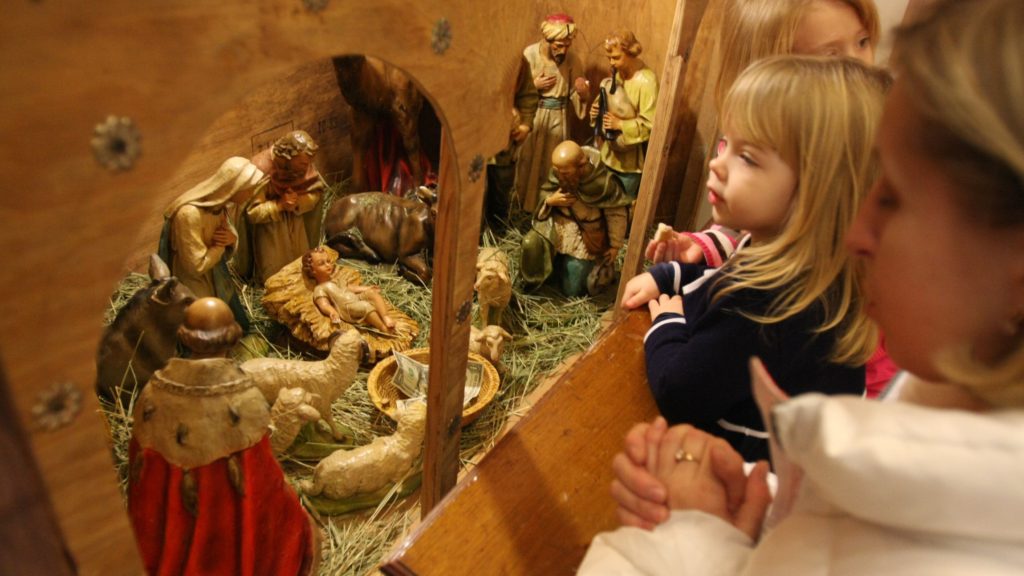I spend every Advent preparing my Nativity, like a bird feathering her nest.
It is spread on a console table before the front door, and I fuss and fuss with it, moving kings and shepherds to just the right spots, and turning the Virgin Mary so that her gaze seems to fall on the little empty crib. I like to listen to “villancicos,” or Spanish Christmas songs, while I work. There are no magical reindeer in these songs, and no jolly wonderworker delivering toys to children who already have too many of them.
There is, instead, an encounter with the intense humanity of the scene in Bethlehem: A real man, harried and haunted, a real woman, heavy with God, a real baby, blue with cold.
The “villancicos” bring us through the door of the rude stable and keep us there. We find the whole genius of Christianity on display: The Lord of grandeur and awe, of greatness beyond our power to conceive, enfolded in the tender flesh of a newborn and held up to us by his young mother.
All the little details awaken our affection and compassion. The José and Maria of the songs are scared, young, lonely, and terribly tired. Jose begs for shelter for his wife, as she shivers on the donkey, holding the hidden God inside her. The innkeeper gruffly refuses, as he stupidly doesn’t recognize the queen of heaven. The cold wind that whistles through the chinks and spaces of the stable wall makes the baby quiver and shake. Won’t someone lend them a sheepskin?
Maria’s hands, the hands of my heart, are chapped with the washing of the diapers; how I wish I could wash them for her! The mice have eaten holes in José’s underwear, and “gitanillos” have stolen the baby’s diapers. Maria come quick and chase them out! José, won’t you hold the baby? His mother, my mother, is exhausted. Or, let me hold the pretty one for just a moment; I want to kiss his forehead and whisper in his ear that I love him.
There is a familiarity with the baby of these songs, in which God has been pulled down from heaven and put in our laps to dandle and caress. He looks like the children in our homes, with olive skin and almond-shaped eyes. There are no barriers of immensity between us and the “Niño Dios,” no chance of losing him in a maze of theology. And yet there is theology in every inch of the scene.
The wood of the stable prefigures the wood of the cross, and the swaddling clothes the burial sheets they will one day wind around his body. He sleeps, now, in a trough where the beasts eat, but before very long he will be food for everyone that approaches the altar. His mother holds him and will hold him again when it is not delightful but agonizing.
I move the manger a little closer to the good José leaning on his staff and consider the placement of the three kings and their camels. How smartly they read the stars and how quickly they set out! There is a little shepherd boy who has a lamb slung over his shoulders. He has a look of gladness about him that I like, that the baby will like.
I place a placid-looking ox close to the manger so that his breath will warm the baby when he comes. I hang a lantern with a little flickering light over the whole scene and wonder if that will be enough to see by. I work hard at making the stream that courses by the stable look real, as I sing aloud the song about the fish who stopped, amazed at seeing the newborn God.
My Nativity is a prayer, of course, as are all the “villancicos.” If prayer is union with God, and if he was once a newborn shivering with cold in a windswept corner of the world, I can do nothing better at Christmas than stay a while by his crib. Perhaps my love will warm him.

